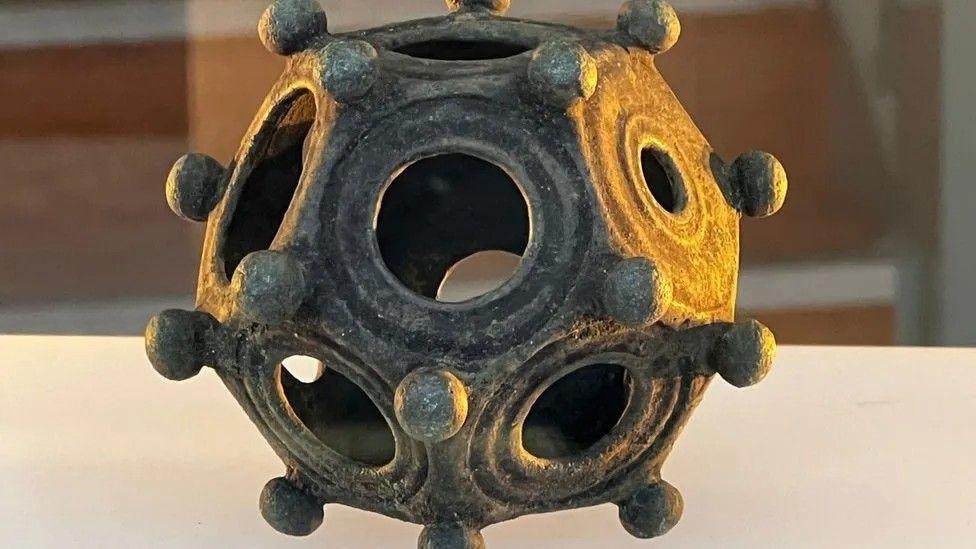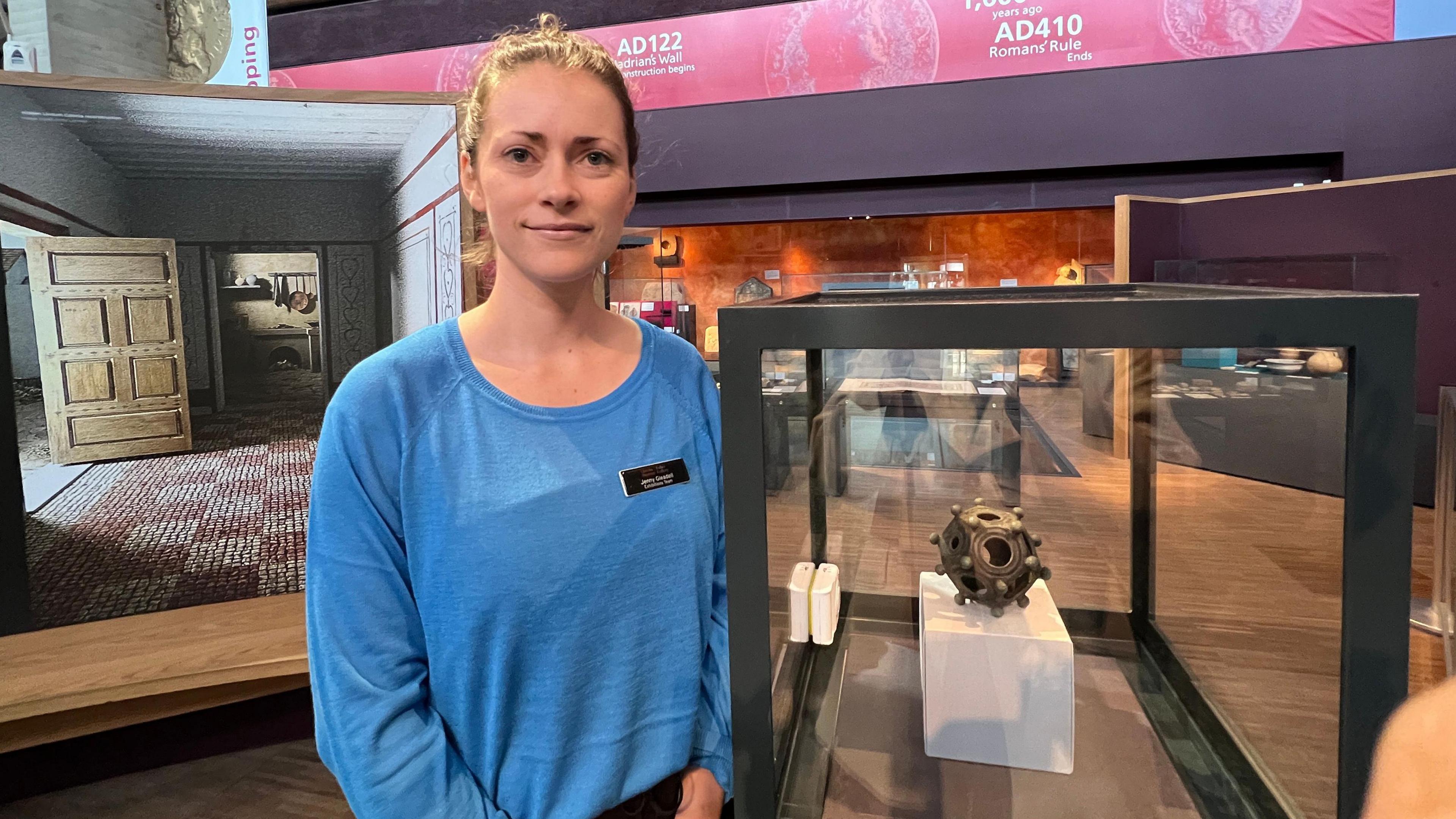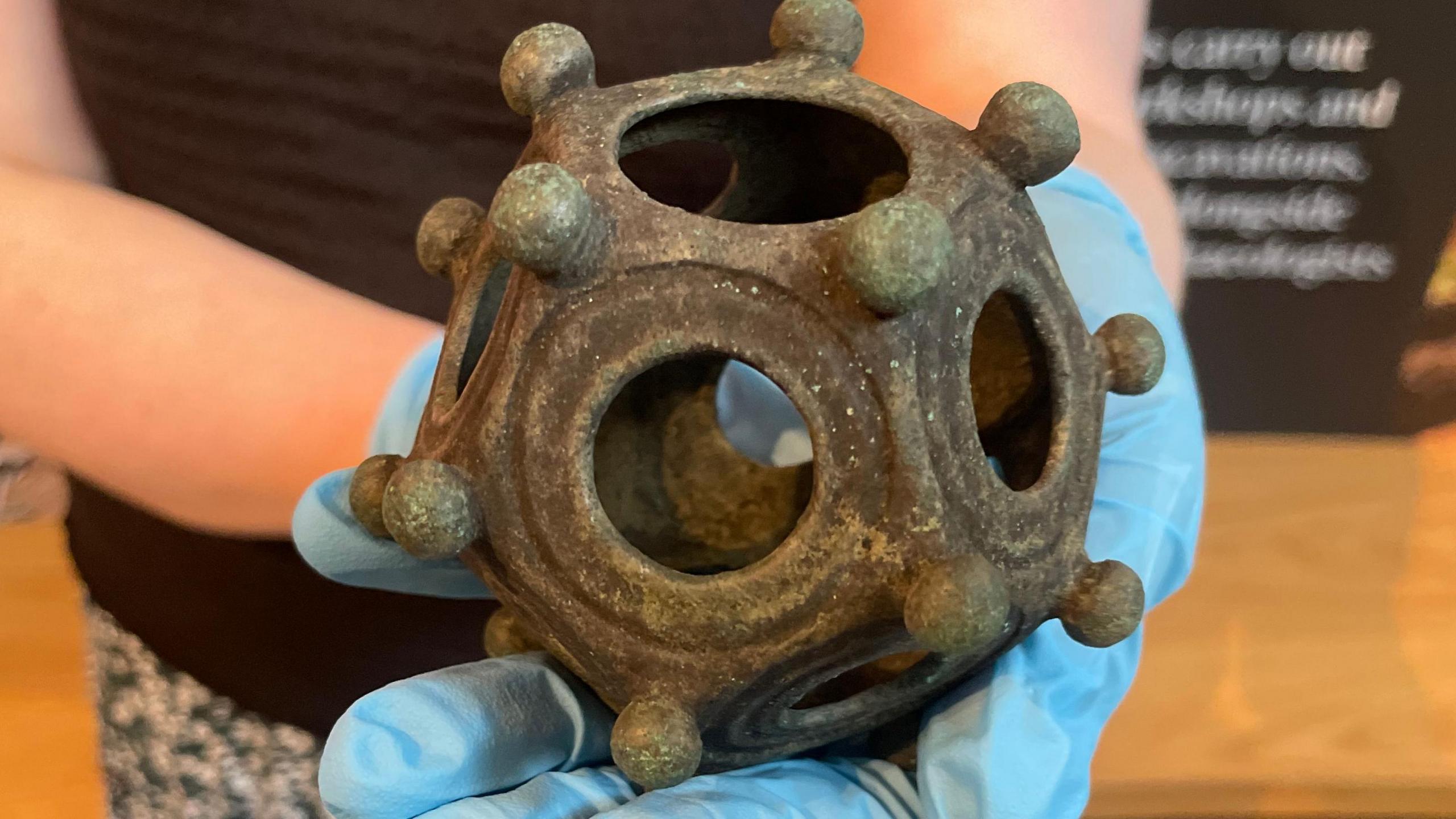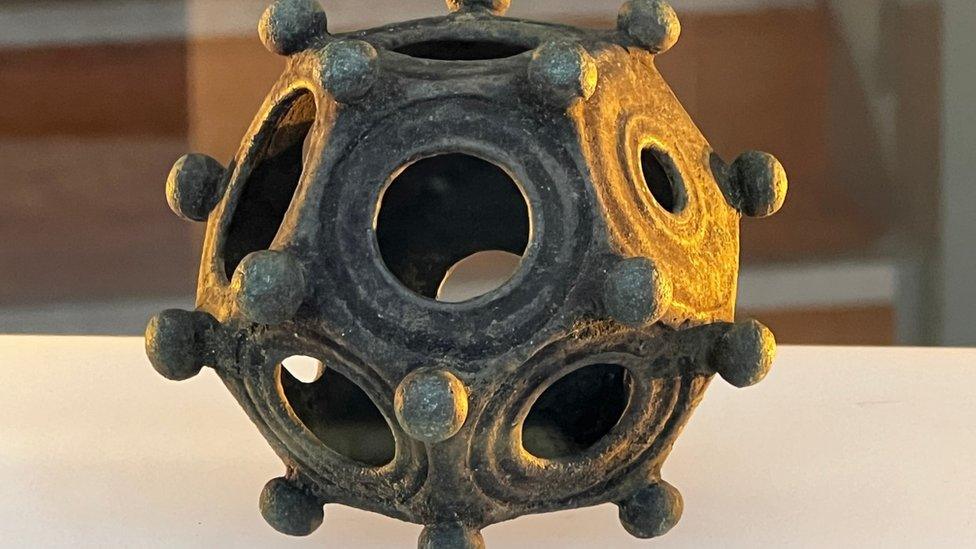Roman dodecahedron to remain on show at museum

The 12-sided object, which has baffled experts as to its use, was the first to be discovered in the Midlands
- Published
A museum display featuring a mysterious artefact dating back to Roman times has been extended after high levels of interest.
The dodecahedron, one of only 33 to be found in the UK, was discovered at an amateur dig in Norton Disney, near Lincoln, in 2023.
The 12-sided object went on show at Lincoln Museum in May this year and had been due to leave at the end of August.
However, the museum said it had now reached an agreement to keep the artefact on display until at least October.
'Element of mystery'
The dodecahedron, which has baffled experts as to its use, is thought to have been buried about 1,700 years ago and is one of the largest found to date, measuring about 3in (8cm) tall and weighing 8oz (245g).
It featured in a recent episode of Digging for Britain, with presenter Prof Alice Roberts saying: "It has to be one of the greatest, most mysterious, archaeological objects I've ever had the opportunity to look at up close."
Visitors to the museum have come up with their own suggestions on what it might have been used for, including a spaghetti measure, or a device for surveying roads.
Architectural historian and broadcaster Dr Jonathan Foyle previously told the BBC he thought it was a device for framing the constellations of the zodiac.

Lincoln Museum's exhibitions officer Jenny Gleadell said the mysterious artefact had attracted a lot of attention
Either way, Jenny Gleadell, exhibitions and interpretations officer at the museum, said the mysterious artefact had attracted a lot of attention.
She said: "We've had more than 15,000 visitors, which has been amazing."
Asked why she thought it had been so popular, she added: "Obviously, it's a very special object - and there is an element of mystery to it.
"I think what people really like is the fact that we don't know what it is."
Follow BBC Lincolnshire on Facebook, X (formerly Twitter), external, and Instagram. Send your story ideas to eastyorkslincs.news@bbc.co.uk, external
Related topics
- Published1 June 2024

- Published5 May 2024

- Published29 April 2024
